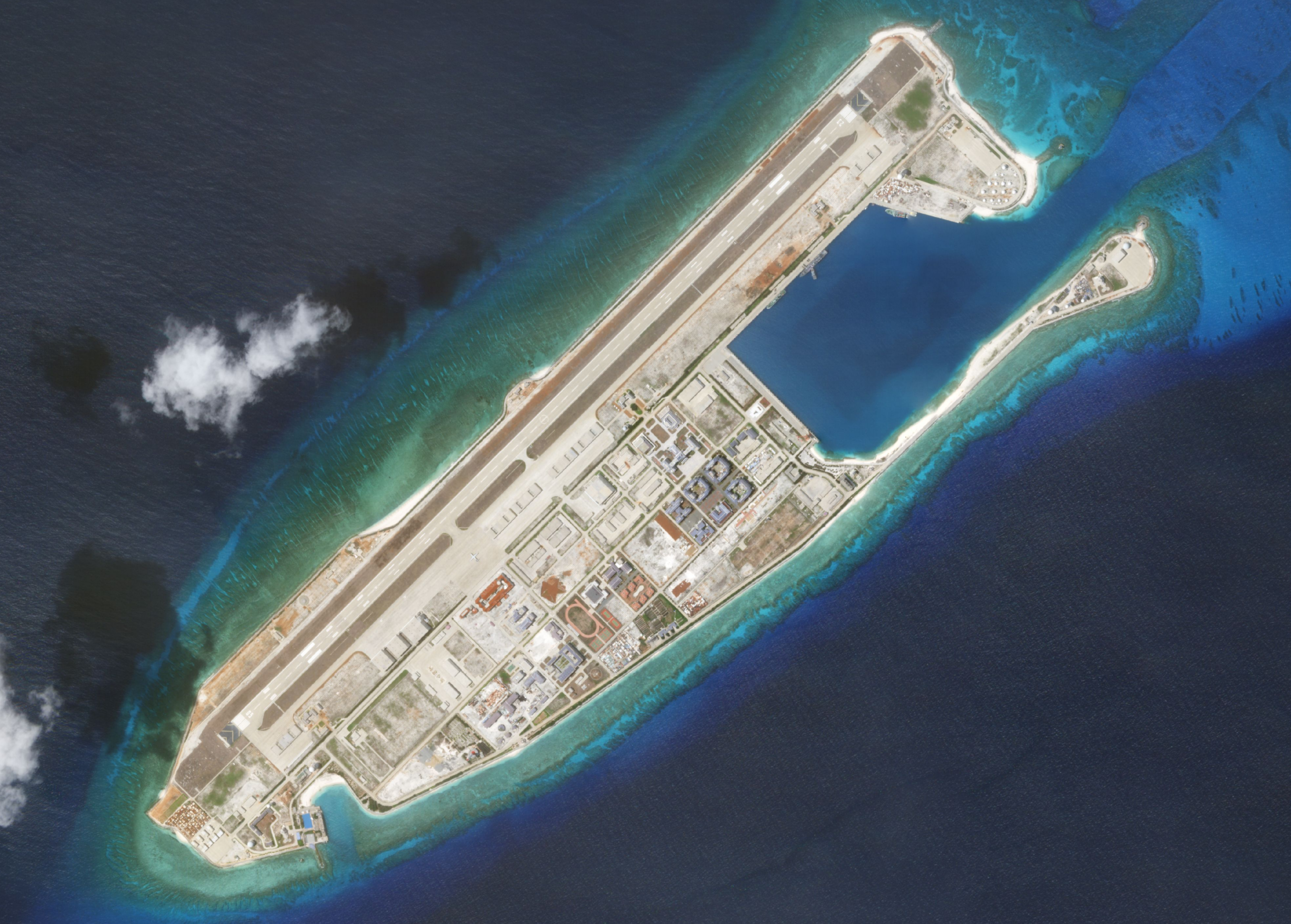One of the reasons why experts agree that China may look to invade Taiwan is due to their activity on the many islands and reefs which dot the South China Sea. Starting around 2010, China started to expand their military presence in the South China Sea “which deviated from the United Nations Convention on the Law of the Sea and the Declaration on The Conduct of Parties in the South China Sea.” The CCP would go on to make radical changes over territorial disputes in the region and started to take actions on their own accord. CCP leader Xi Jinping has repeatedly stated that China would push steady progress on construction on islands and reefs in the South China Sea.
The Chinese Development
In 2012, the CCP constituted the municipal government of Sansha on Woody Island, aiming at jurisdiction over several islands (7 in total), including the Paracel Islands, Macclesfield Islands, and Spratly Islands. Three years later, the seven islets were built into large islands. Massive buildings were constructed that included a “lighthouse, battalion, powerhouse, radar tower, communications station, and desalination plant.”

According to the Epoch Times:
The CCP also built a harbor, airport, hangar, hospital, and sporting grounds for military and civil purposes on Mischief Reef (also known as Panganiban Reef), Subi Reef, and Fiery Cross Reef. They have formed a municipal area which violated the Declaration on The Conduct of Parties in The South China Sea.
It brought South China Sea under the control of the CCP with three artificial islands and expanded Woody Island where Sansha City is located. The islands are equivalent to four unsinkable super-carriers, according to the official statement of the CCP.
In-Depth Analysis: Connecting 2020 UAV Drones and 2023 Chinese Spy Balloons
The U.S. Response
The United States and the world has repeatedly expressed great concern over the Chinese military build up in the South China Sea. In 2020, Secretary Michael R. Pompeo stated for the first time that “The PRC has no legal grounds to unilaterally impose its will on the region.” He also, “denounced Beijing for bullying Southeast Asian coastal states in the South China Sea out of offshore resources, asserting unilateral dominion, and replacing international law with might makes right.”
On Aug. 2, 2021, Germany sent a frigate to the South China Sea for the first time in almost two decades, expanding its military presence in the region.
The Past Agreement
In November 2002, the Chinese regime signed the Declaration on The Conduct of Parties in The South China Sea along with 10 Association of Southeast Asian Nations (ASEAN) members.
“The Parties concerned undertake to resolve their territorial and jurisdictional disputes by peaceful means without resorting to the threat or use of force, through friendly consultations and negotiations by sovereign states directly concerned, in accordance with universally recognized principles of international law, including the 1982 UN Convention on the Law of the Sea; The Parties undertake to exercise self-restraint in the conduct of activities that would complicate or escalate disputes and affect peace and stability including, among others, refraining from action of inhabiting on the presently uninhabited islands, reefs, shoals, cays, and other features and to handle their differences in a constructive manner.”

